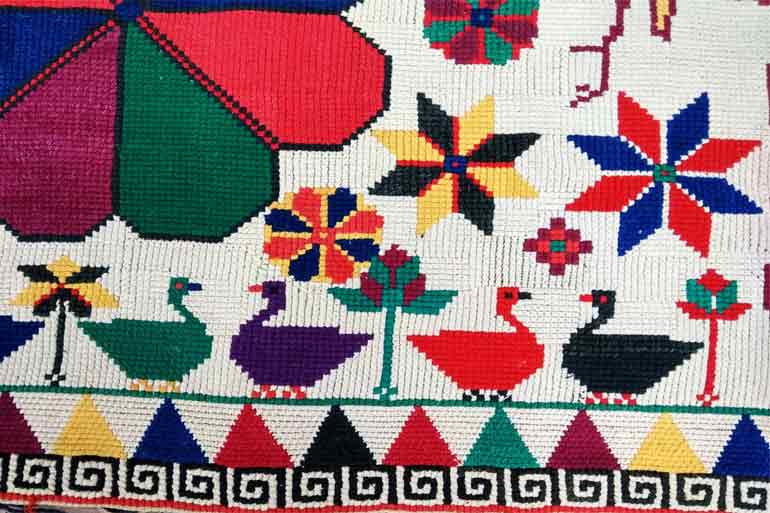Bengal’s traditional craft of making asanas can be traced to 7th century AD
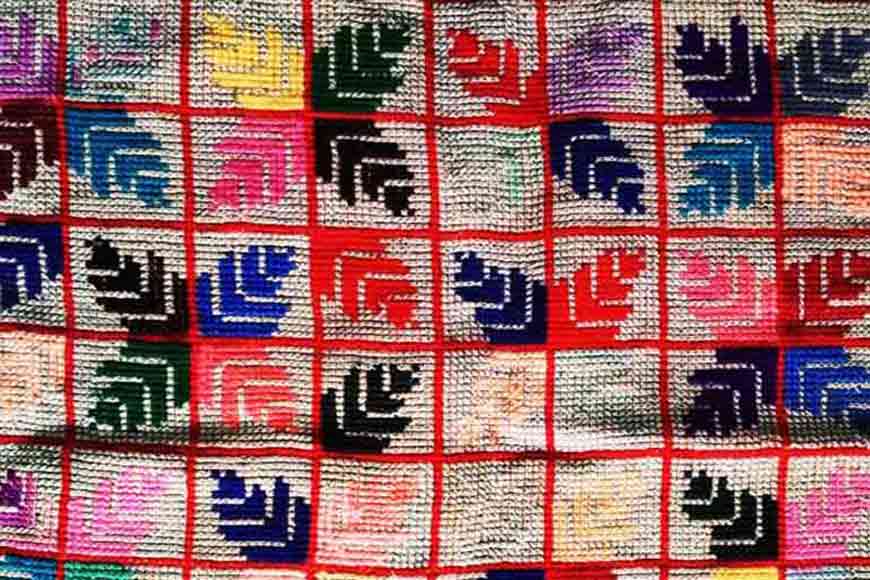
The inner world of asanas
An island peeps in the middle as Ganga envelops it from all sides,
This is the place where trader Shiva resides,
Shiva visits his in laws’ house and is given a wooden stool to sit,
He is welcomed and served flat rice made of shali paddy to eat….
A rough translation of a popular folk verse that represents the genuine joy of welcoming a guest in the rural home of a Bengali family. The guest would be offered a ‘pinri’ (a low wooden stool) to sit and then the ‘asana’ (mat) substituted the stool, as it was more casual and comfortable to sit on the floor. These mats are usually made with bits and pieces of old sarees, bedsheets or other clothes, rejected after much use, or old jute bags etc. Although these asanas are decorative, their chief motive is thrift and economy combined with aesthetics. The idea is to use old and worn out clothes by sewing them together with close stitches and embroidering them meticulously so that not a single piece of cloth is wasted. The care and artistry with which the embroideries are made transform the asanas from their original state of patched up rags into wonderful creations. Women patiently stitch the pieces together to make a square or round mat and then give a vent to their imagination and embroider exquisite pieces of art on the asanas.
Asanas can be traced back to a time when rural women engaged in this form of craft, not necessarily with an intention of creating ‘art,’ but out of everyday need. This traditional craft of Bengal reveals the artistic side of the womenfolk. Rural women still continue the custom as they stitch these exquisite asanas in their spare time, when the rest of the household is engaged in deep slumber.
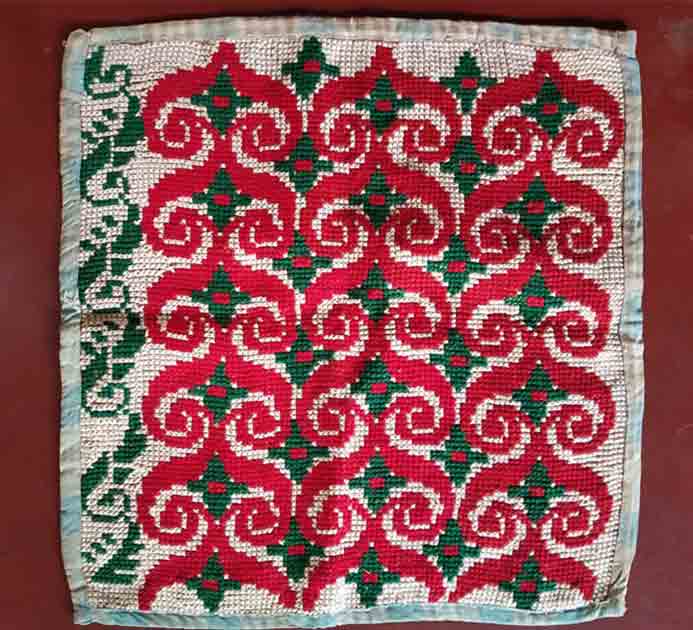
The layers of the asanas are stitched together and the borders in bright coloured yarns taken from saree borders or woolen yarns reused after dismantling old woolen sweaters or cardigans. The motifs that women traditionally stitch on the asanas are familiar items they come across their daily lives, ritualistic symbols or imaginary scenes. Some of the common motifs found in the asanas include alpona. Alpona are colourful motifs, sacred art or painting done with hands and paint on auspicious occasions in Bengal. The word Alpana is derived from the Sanskrit alimpana, which means 'to plaster' or 'to coat with'.
The ancient craft of asanas can be traced back to 7th AD. Offering wooden stools or pinri is mentioned in Charjapad, one of Bengal’s earliest literature. It was written between 7th and 11th AD. Asanas are mentioned in two of the Vratas, including the Jatakas. Vrata is a Sanskrit word that means ‘vow, resolve, devotion,’ and refers to pious observances such as fasting and pilgrimage found in Indian religions such as Buddhism, Jainism and Hinduism.
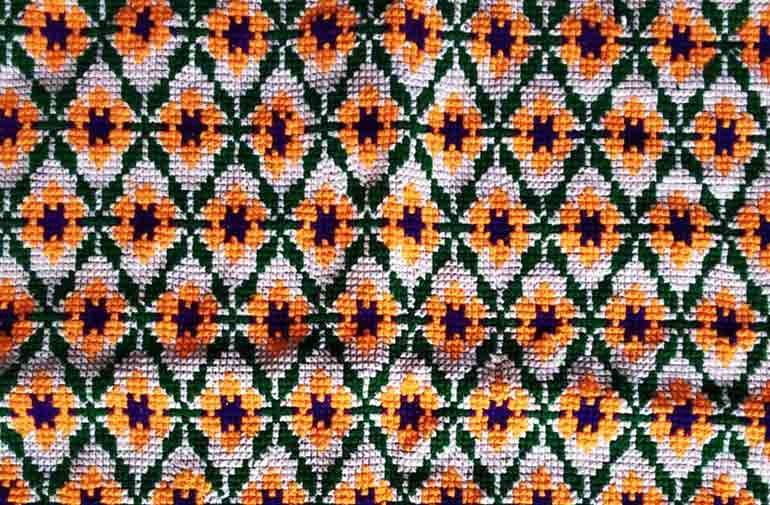
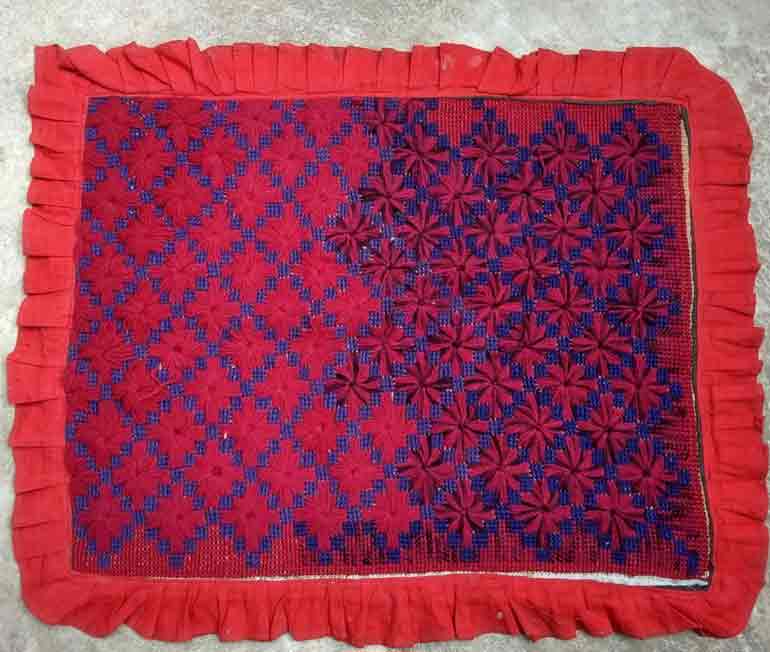
Asanas can be traced back to a time when rural women engaged in this form of craft, not necessarily with an intention of creating ‘art,’ but out of everyday need. This traditional craft of Bengal reveals the artistic side of the womenfolk. Rural women still continue the custom as they stitch these exquisite asanas in their spare time, when the rest of the household is engaged in deep slumber. Their deft hands work ceaselessly, eyes intent on the piece of cloth, burning night oil while creating poetry with embroidery, totally oblivious of the time as the clock keeps ticking. This is a labour of love for the creator.
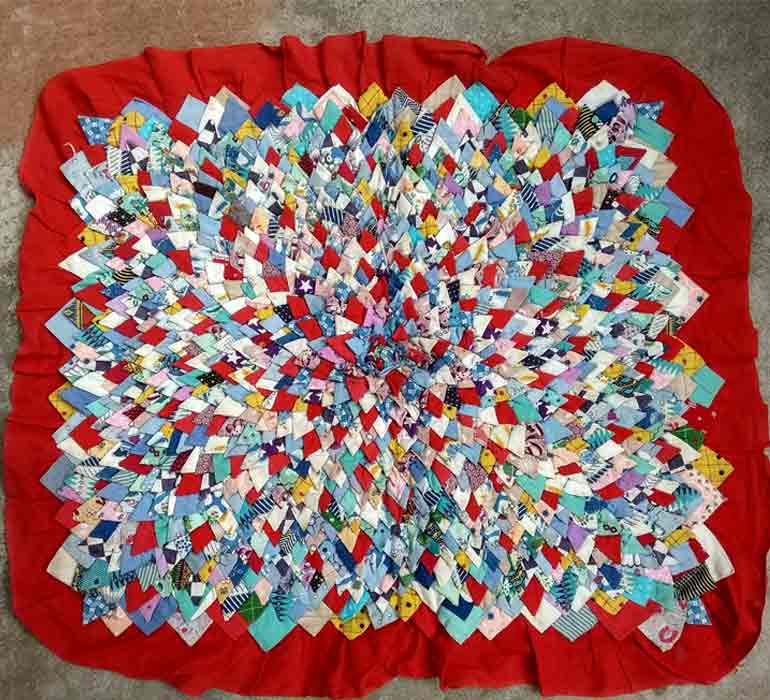
The ancient craft of asanas can be traced back to 7th AD. Offering wooden stools or pinri is mentioned in Charjapad, one of Bengal’s earliest literature. It was written between 7th and 11th AD. Asanas are mentioned in two of the Vratas, including the Jatakas. Vrata is a Sanskrit word that means ‘vow, resolve, devotion,’ and refers to pious observances such as fasting and pilgrimage found in Indian religions such as Buddhism, Jainism and Hinduism. It is typically accompanied by prayers, seeking health and happiness for their loved ones. We know Gautam Buddha was born in 563 BC and Jatakas refer to tales before his birth. So, we can deduce that asanas were in vogue well before the birth of Buddha. It is truly a remarkable feat to re-discover the vibrant ancient craft of Bengal that flourishes even in times of modern gadgets and gizmos.
